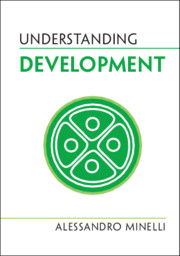Book contents
- Understanding Development
- Series page
- Understanding Development
- Copyright page
- Reviews
- Dedication
- Contents
- Foreword
- Preface
- Acknowledgements
- 1 Defining Development, if Possible
- 2 Cells and Development
- 3 Development as the History of the Individual
- 4 Revisiting the Embryo
- 5 Developmental Sequences: Sustainability versus Adaptation
- 6 Genes and Development
- 7 Emerging Form
- 8 The Ecology of Development
- Concluding Remarks
- Summary of Common Misunderstandings
- Classification
- References and Further Reading
- Index
4 - Revisiting the Embryo
Published online by Cambridge University Press: 29 April 2021
- Understanding Development
- Series page
- Understanding Development
- Copyright page
- Reviews
- Dedication
- Contents
- Foreword
- Preface
- Acknowledgements
- 1 Defining Development, if Possible
- 2 Cells and Development
- 3 Development as the History of the Individual
- 4 Revisiting the Embryo
- 5 Developmental Sequences: Sustainability versus Adaptation
- 6 Genes and Development
- 7 Emerging Form
- 8 The Ecology of Development
- Concluding Remarks
- Summary of Common Misunderstandings
- Classification
- References and Further Reading
- Index
Summary
The traditional notion of the embryo as the developmental phase in which, starting from an undisputable origin (egg, seed) the outline of the bodily architecture of a multicellular organism is shaped, deserves critical discussion. Development does not necessarily have a recognizable starting point. Some of the cells deriving from the zygote may not contribute to the embryo. There are significant differences between the early developmental stages of animals and plants. In animals, at the end of embryonic development the entire structure of the organism is almost always delineated. In plants, the seedling formed during the so-called embryonic development contains only the shoot with the first leaves and the radicle, while the entire structure of the plant, including almost all the leaves and all the flowers, will form from groups of stem cells generated through the entire life of the plant. Development does not necessarily produce an increasing division of labour. Development is not necessarily irreversible. Individual organs are not the products of a distinct developmental process. Differences between species do not always increase progressively from the egg on.
Keywords
Information
- Type
- Chapter
- Information
- Understanding Development , pp. 54 - 75Publisher: Cambridge University PressPrint publication year: 2021
